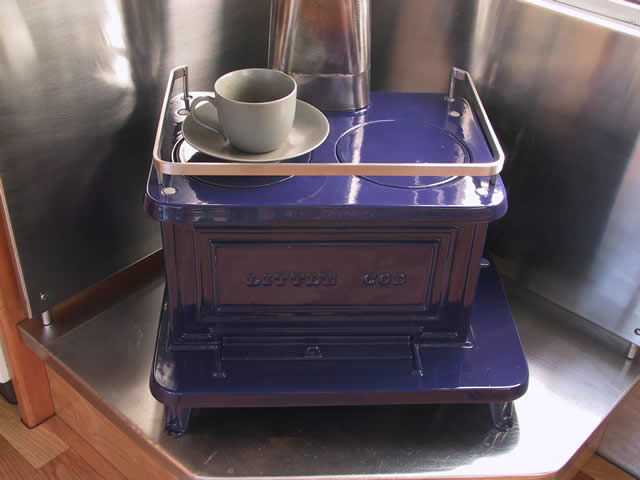The Navigator Stove Forum

Hi Tom,
Measuring min/max chimney flow (vacuum) values with a MANOMETER is more of diesel stove practice. With a diesel stove if you have too much flow up the chimney it can cause burner problems. Not enough and the vapourized fuel will not be pulled out of the burner for proper combustion. With a wood stove, generally the more the better. Exception might be a SARDINE install with a 50 ft. chimney attached. A pronounced jet engine rumble would be audible when operating. You mention wanting to get a minimum chimney recommendation. SARDINES have been known to work with as little as 24" inside a boat and just a smokehead on deck. Others will add an "in harbour" extra piece of pipe on deck to strengthen flow.
Shielding is pretty simple and the only measuring device you will require is a tape measure:
"Exposed materials and finishes within 24” (61Cm) of heat generating surfaces of the #NSW2 shall have a “flame spread index” of not more than 75 as determined in accordance with NFPA 255, Standard Method of Test of Surface Burning Characteristics of Building Materials."
When you then consider what materials surround your proposed install and compare them to the list in the install manual, you will find that basically any material typically found in the boat DOES NOT meet the required flame spread index. Therefore, anything WITHIN 24" will need shielding. The 36" number specified for ABOVE the stove I believe comes from the possibility of something you are cooking on top catching fire? Then also simply accounting for the fact that heat rises. The second factor is making sure the insulation board used has the proper R value to inhibit heat flow through the shielding. Thermafiber's K-FAC19 has values specified that meet the requirement. By the way, cement based Wonderboard or Hardie Board does NOT have enough "insulating" value.
Water deck irons have been around a long time and for good reason. Experience will show you that they are a good solution. They are massively cast can dissipate a lot of heat. If you can remember to put wood in the stove, you had better remember to keep the iron filled with water. Experience will also show that an empty deck iron will not immediately catch your deck on fire. Remembering the science class model of heating water in a paper cup over a Bunsen burner can shed a lot of understanding on this matter.
Insulated pipe above deck is a good idea for the same reason it is used for residential installs. Trick is finding a domestic source? The 4" insulated residential pipe ends up being 6" OD which would be pretty unsightly on a pretty boat. A nice solution would be a 4" ID SS pipe with a max OD of 4.5 - 1/4" insulation. This would keep flue gas temp high and not be too cumbersome. Double wall gas B vent is tempting but usually just made in Galv. and has a twist lock connection. Looks crappy too.
Hope this sheds some light,
Andrew / NSW
andrew,
agree generally with comments on the manometer readings. however, you can have too much flue for a stove, overfiring can result from too much draw. a damper in the pipe was the ususal way to restrict this.
you can probably tell, i have done a fair number of installs in homes, which have different rules i guess. i think where i went wrong in my reading of the ABYC is in the measures for flamable surfaces. what you are saying is by using the thermafiber, you create a non-flamable surface. therefore there is no standoff distance. i was thinking of the 90 degree temperature rise rule of an engineered solution (and the thermafiber was a way to achieve this). this would require equipment i do not have access too. happily it is not needed.
i am well aware that cement board does not meet the requirements. great for mounting tile on though.
i know the theory of how a water deck iron works, and i do not dispute that it would work well if filled with water. perhaps i could combine the ideas and use a 5 inch iron on a 4 inch pipe? i will think about that, but something doesn't seem right about it. i believe the outter diameter of a 5 inch iron is 9 and some inches. you are right about it having some thermal mass. baywood still makes an aluminum one i believe. AL seems a good choice for heat conductivity, though i suppose bronze is tradtional.
lastly, double wall pipe for the exterior. i think this would be a big help and any insulation is good, even double wall with air space as insulation. i was thinking of fabbing up a custom pipe out of SS truck exhaust pipe. it would be nice to take this through the deck (combined with the idea of an oversized deck iron as above) do you know what the insulation is in residential pipe and or a source for?
best,
tom
T,
You could crush up some K-FAC19 and make an insulated pipe filling?
Agree completely about a damper. One will also go through quite a bit of fuel without one! Online manual says don't install a stove without one. The "gas pedal" of the stove....
A/NSW
